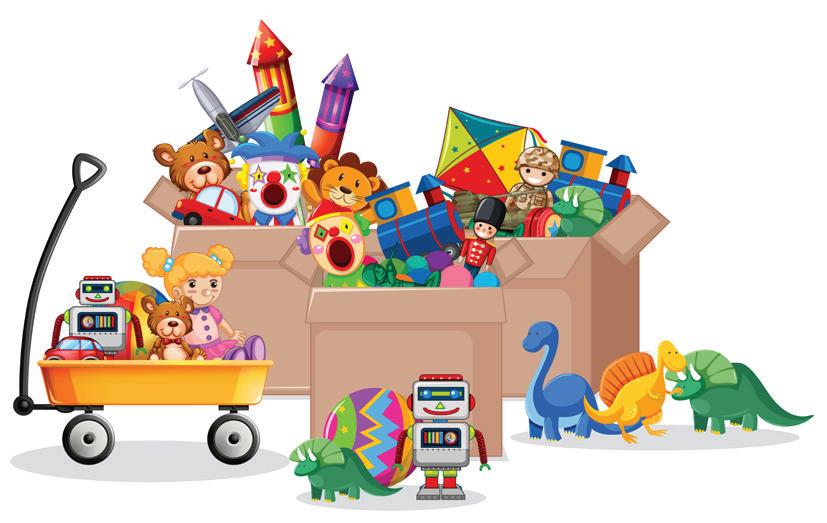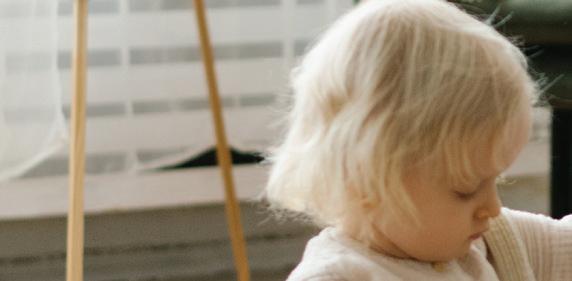
7 minute read
EARLY CHILDHOOD EDUCATION, A SWOT ANALYSIS

By Michael Peterson
Idon't think I'm telling you anything you don't already know, dear reader, when I say the world has been in flux over the last couple of years. Of course, this is as evident in the early childhood education (ECE) space as anywhere else, if not more so! It was just two years ago that I wrote an article for this exact publication discussing how it was imperative that we return to normalcy in ECE and childcare to get the economy back on track. In most ways, we are there now. No longer are schools closing due to Covid outbreaks. Parents don't have to worry from day to day if their child’s school will be closed for the next two weeks, impacting their ability to return to the office. Like many industries, however, the ECE industry is not the same industry it was pre-pandemic.
A SWOT (Strengths, Weaknesses, Opportunities, and Threats) analysis is often used to help a company find its way forward, but this format has other uses as well, including general industry review. It’s likely that most, if not all, franchise industries could use a look under the hood after the hard run we just took them through, and ECE is no different.
In case it is a term you are not familiar with; a SWOT analysis is a tool used to identify internal and external strengths and weaknesses and also external opportunities and threats. It is often used as an overall review to evaluate a company’s current market position as well as to set goals and make path-defining decisions. As I mentioned, however, a SWOT can be applied to a specific industry as well. To do this, we can adjust the scope of the analysis to focus on this industry, and even more specifically, investing as a franchisee in this industry. So today, let’s take a look at the current state of the ECE franchise industry and see what our SWOT analysis tells us. For clarity, this analysis highlights what I consider the two most significant factors for each of the SWOT categories. A full SWOT analysis could easily fill tens of pages, but my goal here is to provide a focused snapshot.
With that said, let's begin, shall we?
Strengths
Let me start with a simple statement. The ECE industry is strong. It is strong now and
PHOTO BY IDA RIZKHA it will remain that way. Let’s look at the individual strengths.
Demand: If the drivers of an industry can be viewed as an engine, this engine has multiple cylinders, each pumping with vigor. First, more and more parents are getting driven back to the workplace, requiring that they find dependable, quality childcare. Compounding this, about a quarter of preschools permanently closed their doors during the pandemic, and increased demand with decreased supply is keeping the pedal to the floor, if I may mix my metaphors. Moreover, there's a burgeoning awareness among parents and policymakers alike about the long-term benefits of early learning and development. As my article 24 months ago mentioned, an Executive Office of the President report (December 2014) pegged societal return on investment at $8.60 for every ECE dollar spent. The pressure of demand is coming from both a groundswell and from societal and governmental recognition.
Digital/Amazon-Proof: Certainly, ECEis, as the current turn of phrase goes, "Amazonproof." Unlike many industries disrupted by the virtual shift, you just can't package a preschool experience and drop it at the front door, gift-wrapped and primed for overnight delivery. The texture of finger paint, the clang of monkey bars, or the hug of a friend who you haven’t seen in forever (or maybe just over the weekend); these simply don’t translate into pixels. Speaking of pixels, anyone who has attempted to steer a lively toddler through a quick Zoom with grandma and grandpa knows it's a feat akin to herding cats. Also, no matter how much we all love Chat GPT (which did not write this article), generative AI just can’t focus on the social, emotional, cognitive, and linguistic development of your child, and especially not while you are at work. The in-person nature of ECE ensures the industry's resilience in an increasingly digitized world. I could go on, Strengths include the fact that more and more families are becoming dual-income, and that the industry has consistently outperformed forecasts (currently the forecast is 15% compound annual growth rate for the next 5 years).
Weaknesses
Investment: The first weakness is not uniform for ECE franchises, but it is present to some extent in all: the initial investment. Opening a preschool or daycare franchise typically starts in the $1 million range and can climb upwards of $4 million for some franchises. This is a substantial sum, and it can be a significant barrier to entry for potential franchisees. Building Kidz preschool, the longest-running Franchise Beacon client, has tackled this somewhat. They’ve developed a model that allows for variable school sizes and real estate models, bringing a more accessible $250K to $1 million investment to the table. Nonetheless, even with Building Kidz, this is not an insignificant sum. (Building Kidz ad see inside the front cover.)

Staffing: If you were to ask any preschool owner today what their biggest challenge is, you’d likely hear “staffing.” Of course, that is equally true of virtually all brick and mortar businesses, but the pinch is felt more so in ECE than in other industries. This weakness is not uniform across brands; staffing should be a focus of your franchisee validation calls if you are considering investing in a preschool franchise.
Opportunities
I will highlight one opportunity that franchisors have to bring additional value to their franchisees, and one opportunity that franchisees likely have, irrespective of the franchise brand.
Opportunity for Franchisors—Partnerships: As the world begins to shift back toward in-person work, there is a tension between employers wanting their staff back in the office and employees who have grown accustomed to the flexibility offered by remote work. Franchisors have a rare opportunity to step in and add true workplace value by forming partnerships with companies to offer childcare services on-site. This would allow franchisors to both ease the transition back to office life and carve out a new and significant revenue stream for their franchisees.
Opportunity for Franchisees—A generational opportunity to expand. For franchisees, the surging demand for and reduced national capacity of ECE presents a clear opportunity to expand and open more schools. Adding fuel to this opportunity is the current real estate market. According to Cushman & Wakefield, the pandemic has left us with roughly 95 million square feet of unoccupied real estate, providing franchisees with the opportunity to expand and secure favorable lease or purchase terms, tenant improvement, and other concessions.


Threats
Every marketplace faces threats, and a realistic assessment of those is a must before you make an investment decision.







Policy Changes: I consider this to be an opportunity, but it must be assessed as a threat as well. As you may be aware, several states are contemplating the expansion of public school programs to embrace pre-kindergarten ages. On one hand, government involvement elevates ECE in the national conversation. In addition to driving enrollment, policy changes have the potential to address the current teacher shortages. This is a maybe, however. Additionally, I believe that the demand for ECE is so immense that free ECE will not address the shortfall, and therefore would neither impact enrollment nor put downward pressure on pricing. Of course, there's always a chance that I might be wrong, or if I'm correct, this could introduce a different external threat, private equity. An infusion of private equity, especially when combined with a free option, could lead to increased competition, depressed enrollment, and/or downward pricing pressure. Again, I don’t think this is a likely scenario, but it should be one that an investor considers.
No Policy Changes: The biggest driver of staffing shortages in ECE right now is the same driver as in other industries: a very strange employment environment that, if recent trends continue, is starting to selfcorrect. However, we still have the underlying issue of preschool teacher wages. The fact is that even a hypothetical preschool operating at near-full capacity with an owner willing to operate at break-even still can’t afford to pay a true living wage, a wage that allows for bill-paying, short-term savings, long-term retirement planning, vacations, etc. Our industry has historically been dominated by secondary earners; that is, they have a spouse or significant other that is the primary earner in the home, allowing them to accept a lower wage, generally in a passion pursuit. For reasons that are too far afield for this article, the pool of voluntary secondary earners is not keeping pace with the population at large. Thus, future subsidies for employment in this sector could become an essential consideration. Without such support, we may face a severe shortage of preschool teachers. I believe that no one, from the administration down to the individual voter, will allow this to happen, but again this must be looked at from a threat standpoint.
Thank you for sticking with me through this SWOT exercise. Here are some key takeaways, as I see them:

● Our industry is strong, has a surging demand, and has a built-in resiliency due to its resistance of tech disruption (Amazon-proof).
● Like any industry, there are challenges. For ECE, chief among those is the required investment and challenges around staffing.


● Opportunities for franchisors and franchisees abound! Two key areas are (franchisors) strategic partnerships and (franchisees) capitalizing on available real estate for expansion.



● Future policy changes (or the lack thereof) are potential threats; they are also areas of potential opportunity for strategic growth and positioning.
I am extremely bullish on the ECE industry. I think that it is very important; however, investors in the industry must make sure they partner with a franchisor that has a track record of success and of foreseeing and getting in front of changes in the industry. As with any industry, prospective franchisees should invest with an eye on the risk factors as well as the upside. w











